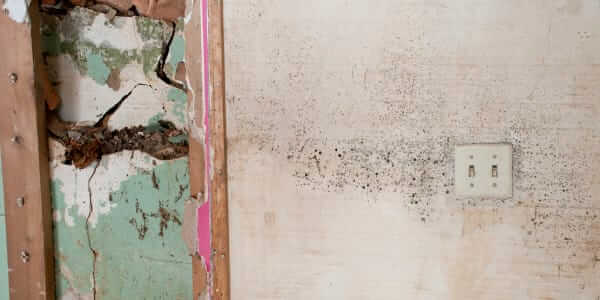One of the worst things that can happen to your home is mold. With the help of a few spores and enough moisture, mold can ravage a home quickly. It creates bad smells and unsightly stains. If left unchecked, it can reduce your home’s value and make you and your family sick.
Most homeowners know the importance of getting rid of unwanted moisture as soon as possible. It’s your home’s worst nightmare. The question that remains for many homeowners is a big one.
Is mold damage covered through your homeowners insurance?
WHERE DID THE WATER COME FROM?
The question of home insurance and mold comes down to the water. Flooding and water damage are two different things.
Flooding is defined as external rising water, often caused by nature – typhoons, hurricanes, excessive rain, etc. Standard home insurance policies don’t cover damage from floods. However, you can purchase an additional flood insurance policy, which should provide you with protection from flood damage, including mold.
Water damage occurs when water hits the home before it hits the ground. Roof leaks and busted pipes are common examples. Standard policies should cover mold removal if water damage was the cause.
Something to remember – most homeowners insurance policies will not cover mold damage if it was caused by long-term neglect.
DEALING WITH MOLD
Whether your policy will cover the damage or not, you need to deal with mold problems immediately. Take pictures of the damage and call your insurance agent as soon as possible. Regardless of whether it’s covered in your homeowners insurance, you need to stop the flow of water and clean up what you can.
Call a professional for mold growing in areas larger than 10 square feet – or for any mold damage that seems too big or complicated to handle. If the damage is relatively minor, and you want to clean it up yourself, follow these tips:
- Wear protective clothing – long sleeves, rubber gloves, a respirator mask, and even goggles or safety glasses
- Ventilate the room while you’re cleaning.
- Use bleach.
- Place anything that touches the mold – clothing, gloves, cleaning utensils – in an airtight plastic bag before disposing of the items.
- Remove and replace any affected drywall.
The most important things to remember are to get rid of the moisture causing the mold and tostop the spread of the mold.
If you’re unsure whether your homeowners insurance covers mold damage, contact us today. At Charlotte Insurance, we’re here to help you protect your home now and in the years to come.

